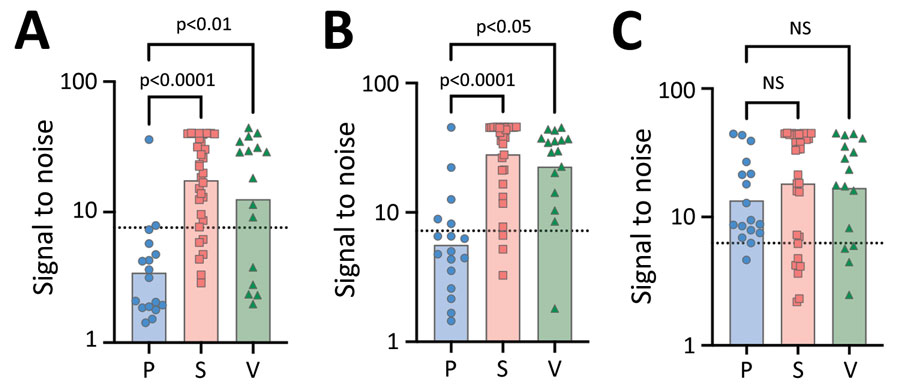Volume 29, Number 7—July 2023
Research
Triplex ELISA for Assessing Durability of Taenia solium Seropositivity after Neurocysticercosis Cure
Figure 4

Figure 4. Positivity patterns per cyst location for a triplex assay to determine durability of Taenia solium seropositivity after neurocysticercosis cure. The assay combines 3 families of T. solium antigens: A) T24H; B) GP50; and C) Ts18var3. Graphs display signal-to-noise reactivity to T24H, GP50, and Ts18var3 by neurocysticercosis disease type. We assessed differential reactivity to T. solium antigens in samples from 68 neurocysticercosis-positive persons, 17 with parenchymal, 16 with ventricular, and 35 with subarachnoid neurocysticercosis. Dotted horizontal lines indicate 100% specificity cutoff each protein. NS, not statistically significant; P, parenchymal; S, subarachnoid; V, ventricular.
Page created: May 08, 2023
Page updated: June 20, 2023
Page reviewed: June 20, 2023
The conclusions, findings, and opinions expressed by authors contributing to this journal do not necessarily reflect the official position of the U.S. Department of Health and Human Services, the Public Health Service, the Centers for Disease Control and Prevention, or the authors' affiliated institutions. Use of trade names is for identification only and does not imply endorsement by any of the groups named above.